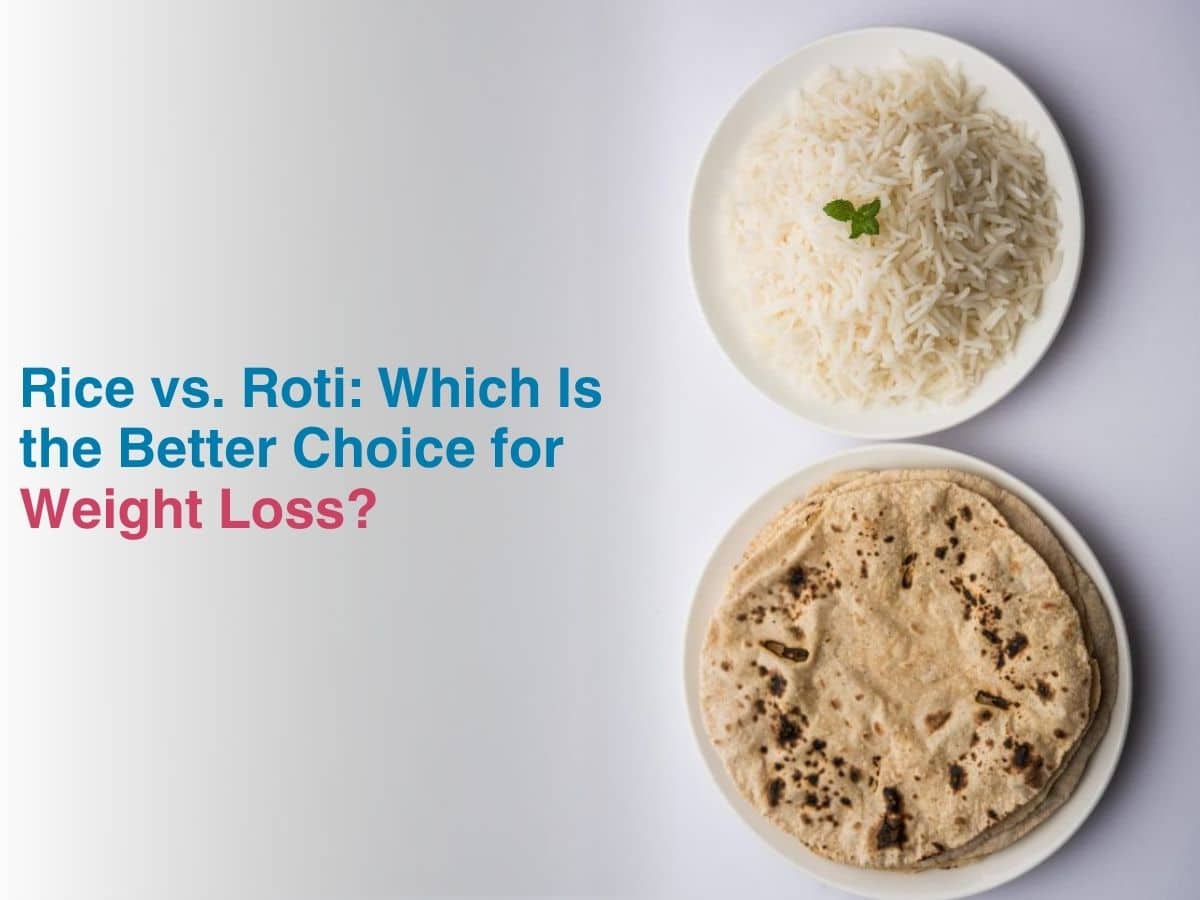
Rice vs. Roti : Which Is the Better Choice for Weight Loss?

A typical Indian meal consists of about a couple sources of carbohydrates. Research in the west has shown highly skewed data in this respect and told us that we need to cut down on our rice and maida products completely, to get healthy and lose weight. But, what if we told you that cutting down rice or roti completely is not good for you? Your body needs energy to run and the most efficient energy source is carbohydrates, followed by fats. Let us try to referee the ultimate debate- roti vs. rice and help you understand which you should choose.
Nutritional Comparison Between Rice And Roti For Weight Loss-
Rice and roti are two very popular carbohydrate sources consumed in India. Rice is one of the most popular carb sources in the world. White rice is the more processed or polished version which has been stripped of its bran and husk. Parboiled rice is a form of rice where it has been boiled long enough for the nutrients to enter deep within the grain, so even if it gets polished, it still retains some nutrients. Though red rice, brown rice and black or forbidden rice are not that widely consumed, people have now started to appreciate them better. One of the main reasons why these are not preferred over normal white rice is convenience- the latter can be cooked in a few minutes, while the former needs to be soaked overnight or for a few hours before being pressure cooked. The nutrient profiles of both rice and roti match pretty closely, with the exception of fibre, which is found in higher amounts in wheat. Rice is better than wheat if you have high blood pressure since the sodium content in rice is almost nil, while it is 190 mg in 120 g of wheat. Both have comparable amounts of iron, folate and other minerals.
Rice vs. Roti – Which Has Lower Glycemic Index-
Rice has a higher glycemic index than wheat rotis. Rotis have lesser carbohydrates in them. Plain rice however has no fat in it, though when we make rotis, we prefer adding some ghee or oil on them for flavour, which means the added fats may be an issue for some of us. Rice has simple carbohydrates, so it is broken down very quickly and causes a glucose spike in the blood, leaving you feeling hungry very soon.
Optimal Portion Sizes Of Rice And Roti For Weight Loss-
About half a bowl of rice which is about 150-200 grams of rice and 2 phulkas or chapatis without oil can be good for you. Try to fill about 75% of your plate with veggies, dal, salads and other sides so that you have only 25% left for the carbs- in his case, rice or rotis. Unfortunately though, many of us don’t bother to follow portion control when it comes to eating rotis, since we think rotis are ‘healthier’ than rice in general. Rice is however a good source of carbs for instant energy and is heart-friendly too.
Comparing Fiber Content In Roti vs. Rice For A Proper Diet-
Rotis have more fibre content than rice. Most of the fibre in rice is lost if it is polished. If you still prefer rice over rotis, you can eat brown rice, red rice or black rice with the husk still on. Rotis can be made from a variety of flours and millets, so you won’t get bored that easily.
Conclusion
We know there is never going to be an end for the roti vs. rice debate, because both are good sources of carbohydrates that can nourish our body. Instead, we should start talking about portion control and not adding oil or ghee on our rotis. We should prioritise eating more veggies, pulses and fruits everyday. Blaming rice for not being able to lose weight actually makes little sense. A good example is many south east asian countries love their rice, but the number of obese or overweight individuals is very low. Japan for instance has very low obesity rates, like less than 4-5% but they still love their sticky rice. They pay a lot of attention to portion size and eating seasonal produce everyday. It is time we start doing that too.






